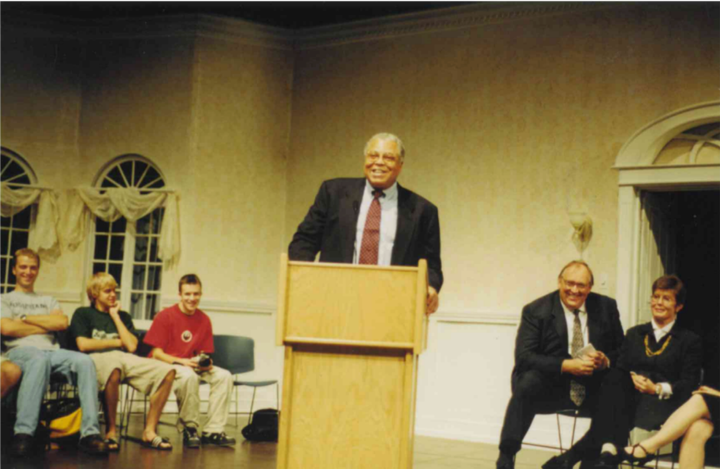New administration seeks more diversity on campus
BEAU BORDEWYK
Augustana University aims to increase the diverse student population, counting domestic students of color and international students, to 20 percent of enrollment, according to Augustana University President Stephanie Herseth Sandlin.

Diverse students currently constitute just over 16 percent of the student population. In 2014, when the goal of 20 percent of enrollment being made up of diverse students was adopted, the percentage was at 14.6 percent.
Herseth Sandlin says diversity is an important factor of Augustana’s vision for the future.
“Diversity factors into our vision because we believe that by helping more students learn about each other and the world, we’re also preparing more individuals to make tomorrow’s communities even better than today’s,” Herseth Sandlin said. “That’s why we work so hard to provide our students with a global perspective.”
When it comes to creating a campus that cultivates global perspectives in students, Herseth Sandlin said communication, among both faculty and students, is essential.
“These conversations have given way to great discussions on possibilities for the future,” Herseth Sandlin said. “We need to ask our faculty and staff if they feel they are equipped to serve more diverse students or do they feel they would be better equipped with additional training or guidance. Frankly, we won’t know unless we ask.”
Director of Diversity and Inclusion Mark Blackburn spoke to the importance of diversity for students.
“If you’re not taught the realities of the diverse world we live in, when you get to the real world, you won’t be ready,” Blackburn said. “Because the real world does not look just like Augie. It’s diverse. So it’s important that we invest in diversity, inclusion and equality so that students are prepared to handle the real world.”
Blackburn also said that the campus should be more representative of Sioux Falls. U.S. Census data showed that the black population in South Dakota rose from 4,865 in 2000 to 10,207 in 2010. U.S. Census data also showed that two-thirds of South Dakota’s black population lives in Sioux Falls.
“If we are going to diversify our student population, I think it would be advantageous for us to attract faculty and administrators of color that students can look to in terms of a role model and someone they can aspire to be,” said Blackburn.
Blackburn stressed that although the administration and faculty are integral in promoting diversity and inclusiveness across campus, students are just as integral.
“It is an eye opening experience when you put yourself in somebody’s shoes that is different than you,” Blackburn said. “I’m not just talking racially. I’m talking concerning socioeconomics or gender. This is why it’s so crucial for students to develop interpersonal relationships with one another and to look at ways that their advantages and privileges can help others who are oppressed.”
Senior Abel Negash, from Addis Ababa, Ethiopia, said that during his four years at Augustana, diversity on campus has improved.
“It used to be if you were a black student on campus, you were either an athlete or an international student,” Negash said. “Now that’s not strictly the case.”
Manaal Ali, born in India but raised in Chicago and Sioux Falls, says she also learned a similar stigma.
“When I came here, I wasn’t expecting all these international students,” says Ali. “I think the school also does a good job of encouraging students to learn about other cultures, which is obviously important for a balanced education.”



